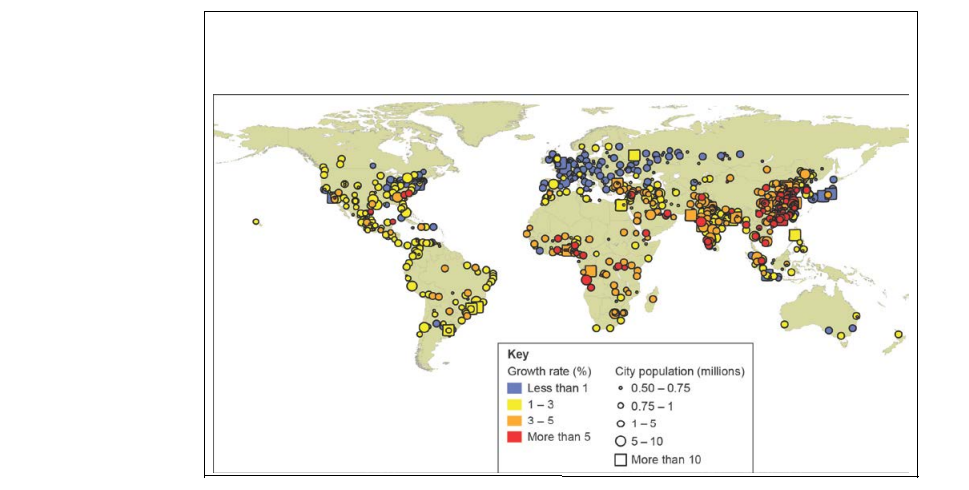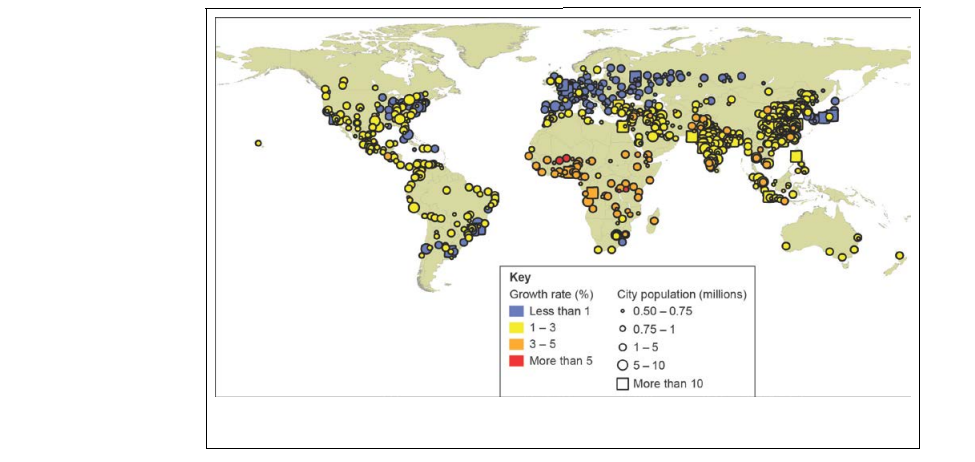Outline characteristics of an area undergoing urban resurgence.
[4]
Did this page help you?
Outline characteristics of an area undergoing urban resurgence.
Did this page help you?
Figure 7 - 1990–2015

Figure 8 - 2015–2030

Did this page help you?
[9]
Did this page help you?
[4]
Did this page help you?
Did this page help you?
Some inner-city areas have undergone gentrification, whereby people buy run-down properties and turn them into luxurious homes. This causes house prices to rise.
New technology such as Skype and conference calls allow people to work from home, enabling them to live a much greater distance from their place of work.
The closure of coal mines meant that many miners’ families had to leave the pit villages. They moved to the local towns and cities, working in low-skilled jobs in retail parks.
The local shops in many commuter villages are forced to close as the residents living in the new housing estates shop nearer to their places of work in the cities.
Did this page help you?
The most urbanised regions include North America (82%), Latin America and the Caribbean (80%) and Europe (73%).
The fastest rate of urbanisation is found in Latin America which is projected to increase to 91% by 2030.
Growth is projected to rise fastest in North America and Europe, with just three countries accounting for most of the growth – UK, USA and Germany.
The most urbanised regions are Asia (82%), Africa (80%) and Latin America and the Caribbean (71%).
Did this page help you?
The increasing number of people living in towns and cities
The increasing proportion of the population living in towns and cities
The movement of people from inner city areas into the suburbs
An increase in the number of megacities in a given region
Did this page help you?
It is now cheaper to manufacture steel in China due to the nearby availability of raw materials and large low-cost supply of labour. This has resulted in the closure of steel plants such as Tata Steel in Redcar.
In Notting Hill, individuals moved into large slum houses and began to redevelop them. House prices began to rise and landlords, realising they could make a quick profit, sold these houses to private property developers. There are also many boutiques and gastropubs in the area.
Decline in manufacturing in the UK has led to the rise of the service economy in urban areas. This has occurred due to the increased technology demands of a consumer society. As a result more people work in quaternary-based ICT industries than manufacturing.
In the UK, the government encouraged the relocation of government agencies and public bodies away from London. Examples include the DVLA relocating to Swansea and the BBC moving to Media City in Salford.
Did this page help you?
To what extent do you agree with this statement?
[20]
Did this page help you?